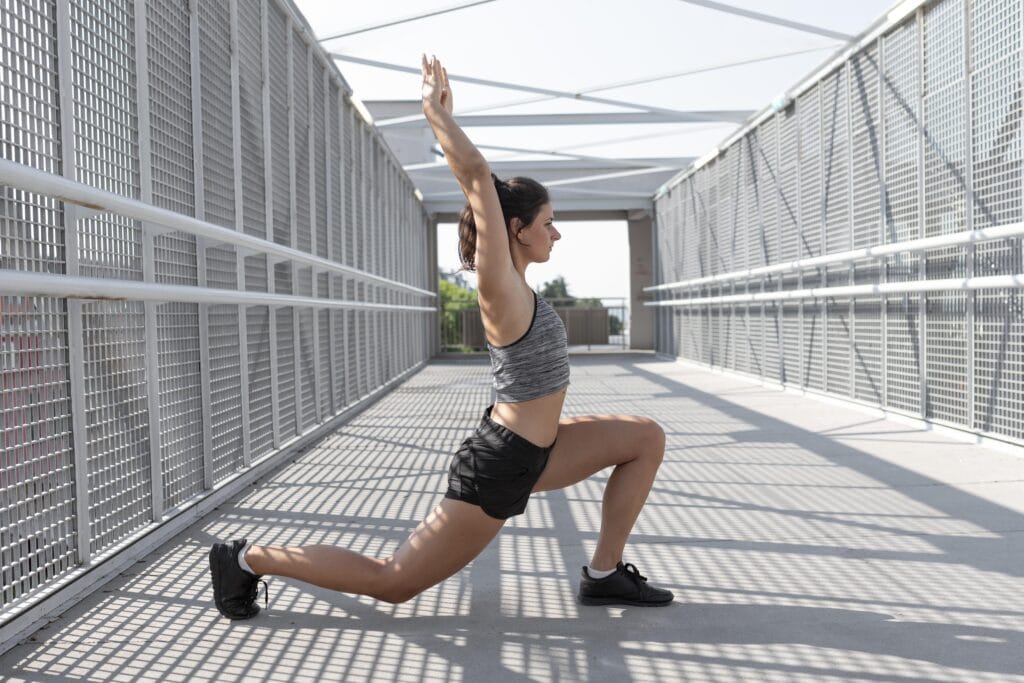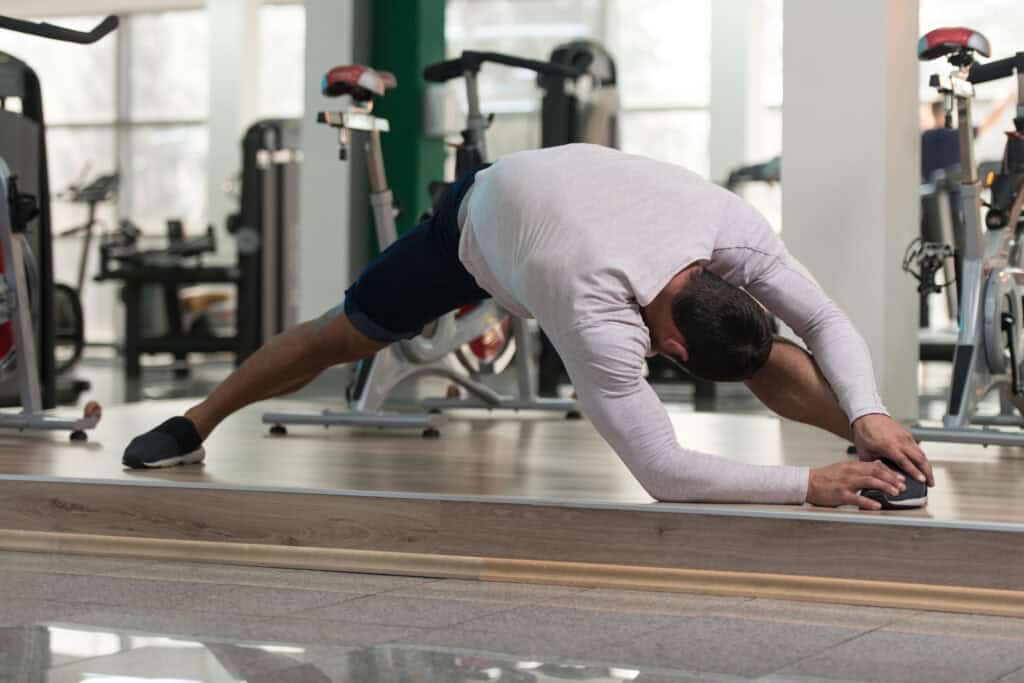In a world where gym time is often limited, many gym enthusiasts wonder: Is adding flexibility and mobility work to my routine really worth it? While it’s tempting to dedicate every minute to lifting, research and experts suggest that warm-up, mobility drills, and flexibility exercises are necessary. These types of movements can significantly enhance your strength gain, reduce injury risk, and improve your overall performance. Here’s a breakdown of why you might want to include these exercises into your routine. Even with a busy schedule, because they can positively impact your strength training goals.
Value of Flexibility and Mobility in Strength Training
Flexibility and mobility training often get pushed aside in favor of more “productive” exercises like squats, bench presses, or deadlifts. However, flexibility and mobility are foundational for optimizing these movements. Mobility is your body’s ability to move a joint through a full range of motion with control, while flexibility is the capacity of muscles and tendons to lengthen to allow that movement. Both are essential for lifting mechanics, as they help you perform exercises with proper form and reduce compensation patterns that could lead to injury.
Why Warming Up Matters for Strength Training
Warming up before strength training is crucial to “prime” the body for heavy lifting. Skipping a warm-up can lead to stiffness, limited range of motion, and a greater likelihood of muscle strain. According to the American Council on Exercise (ACE), a good warm-up increases blood flow to muscles, boosts joint lubrication, and readies the nervous system for the demands of a workout. Research published in the Journal of Strength and Conditioning Research found that warming up improved muscle activation and exercise performance, especially in strength activities.
A typical warm-up should include dynamic stretching, mobility drills, and light aerobic activity. For example, exercises like arm circles, leg swings, or bodyweight squats target joint mobility and increase blood flow to major muscle groups. This type of warm-up can make your muscles more pliable and ready to bear heavy loads, helping you avoid injuries and enhance lifting performance.
Flexibility and Mobility as Injury Prevention Tools
One major benefit of incorporating flexibility and mobility exercises is injury prevention. Strength training can often lead to muscle imbalances if certain areas are neglected or overused. For example, tight hip flexors, weak glutes, or limited ankle mobility can restrict movements like squats or deadlifts, causing other muscles to overcompensate, which increases injury risk.
A review in Sports Medicine highlights that consistent flexibility and mobility work can reduce chronic pain, lower the likelihood of strains, and improve functional movement patterns, which are essential for longevity in strength training. By dedicating a few minutes per workout to mobility exercises, like hip openers or thoracic spine twists, you can reduce these imbalances and lift more safely.
How Flexibility and Mobility Enhance Strength
Flexibility and mobility exercises can also improve your strength. When you can fully extend your muscles and move joints through their optimal range of motion, you can generate more power and maintain better alignment in exercises. For instance, an athlete with good shoulder mobility will have a better overhead press form, allowing them to lift more weight efficiently and with less risk of injury.
Moreover, a study published in the Journal of Sports Science & Medicine found that athletes who incorporated mobility exercises as part of their warm-up experienced improved performance in dynamic strength tasks, as well as greater activation of muscle groups necessary for heavy lifts. The increased range of motion not only helps boost strength but also makes each lift more efficient, maximizing your time in the gym.

Should You Add Yoga to Your Routine?
While you may feel that yoga is separate from strength training, it can be a valuable addition to a weekly workout plan. Yoga promotes flexibility, balance, and core strength, which are crucial for heavy lifting. Regular yoga practice has been shown to enhance balance, stability, and body awareness—all of which transfer well to strength exercises by helping maintain control and form during lifts.
For instance, practicing yoga poses like the pigeon pose or downward dog can improve hip flexibility and hamstring length, aiding in better form during squats or deadlifts. According to research in Complementary Therapies in Medicine, yoga improves musculoskeletal health and joint mobility, especially when practiced consistently. Adding a single 20-30 minute yoga session once a week could be beneficial without taking too much time away from lifting.
How to Fit Flexibility and Mobility into a Busy Schedule
For those with only an hour in the gym, it’s still possible to integrate flexibility and mobility without sacrificing time lifting weights. Here’s how:
- Start with a Dynamic Warm-Up: Spend 5-10 minutes at the beginning of your session on dynamic stretches and mobility exercises. Arm swings, lunges with rotation, and hip circles can warm up major muscle groups quickly.
- Integrate Mobility Drills Between Sets: Rather than sitting idly between sets, use that time for quick stretches or mobility moves. For example, do ankle mobility work between deadlift sets or shoulder rotations between bench press sets.
- Cooldown with Static Stretching: Dedicate the last 5 minutes of your session to static stretching. Focus on muscles worked during your session (e.g., hamstrings, quads, back) to improve flexibility over time and aid recovery.
The Bottom Line: Is Flexibility and Mobility Worth It?
Including flexibility and mobility exercises in your strength training routine is highly beneficial. While it might seem like these exercises eat into your gym time, they actually serve as investments toward more effective and safer lifting. From enhanced range of motion to injury prevention, these exercises support both your short-term lifting goals and long-term physical health.
Final Thoughts
To summarize, if you’re serious about strength training and want to continue progressing without setbacks, consider prioritizing flexibility and mobility. They are essential tools for maximizing performance and reducing injury, making them worth the extra time. By dedicating just a few minutes per session to these exercises, you can build a strong, resilient body that’s capable of lifting optimally. Incorporate flexibility and mobility into your workouts for sustained gains and injury-free training. This addition is a small commitment with a big payoff.
Stay Strong Together
If you’re serious about nutrition, building muscle and reaching your fitness goals, the Jefit app is the perfect tool to help get you there. With over 20 million downloads and more than 12 million bodybuilders using the app to track their workouts, Jefit is the ultimate strength training companion. Rated as the 2023 Best App and featured by top publications like Men’s Health, PC Magazine, and USA TODAY. Jefit boasts 42,000+ five-star ratings for its user-friendly design and comprehensive features. Whether you’re focused on protein intake, building strength, or tracking your progress, Jefit has everything you need to succeed. Download Jefit today and join millions of fitness enthusiasts transforming their bodies!
References
Journal of Strength and Conditioning Research: This journal published a study illustrating the benefits of warming up on muscle activation and exercise performance, particularly for strength-based exercises.
McCrary, J. M., Ackermann, B. J., & Halaki, M. A systematic review of the effects of upper body warm-up on performance and injury. Journal of Strength and Conditioning Research, 2015.
Sports Medicine: A comprehensive review in Sports Medicine covered how flexibility and mobility exercises help in injury prevention by promoting proper functional movement and reducing chronic pain.
Thacker, S. B., et al. The impact of stretching on sports injury risk: a systematic review of the literature. Sports Medicine, 2004.
Journal of Sports Science & Medicine: This journal published research showing how mobility exercises during warm-ups improve performance in strength tasks and enhance muscle activation, which can aid in lifting heavier weights with better form.
Behm, D. G., & Chaouachi, A. A review of the acute effects of static and dynamic stretching on performance. Journal of Sports Science & Medicine, 2011.
Complementary Therapies in Medicine: This journal examined yoga’s impact on musculoskeletal health, balance, and joint mobility, indicating that yoga can positively support strength training by improving flexibility, stability, and body control.
Cramer, H., Lauche, R., Haller, H., & Dobos, G. A systematic review and meta-analysis of yoga for low back pain. Complementary Therapies in Medicine, 2013.
- Build Strength & Burn Fat: Combine Strength Training and Circuits - May 2, 2025
- Best Arm Exercises Backed by Science - April 30, 2025
- Build Stronger Hips with these 4 Hamstring Exercises - April 28, 2025
